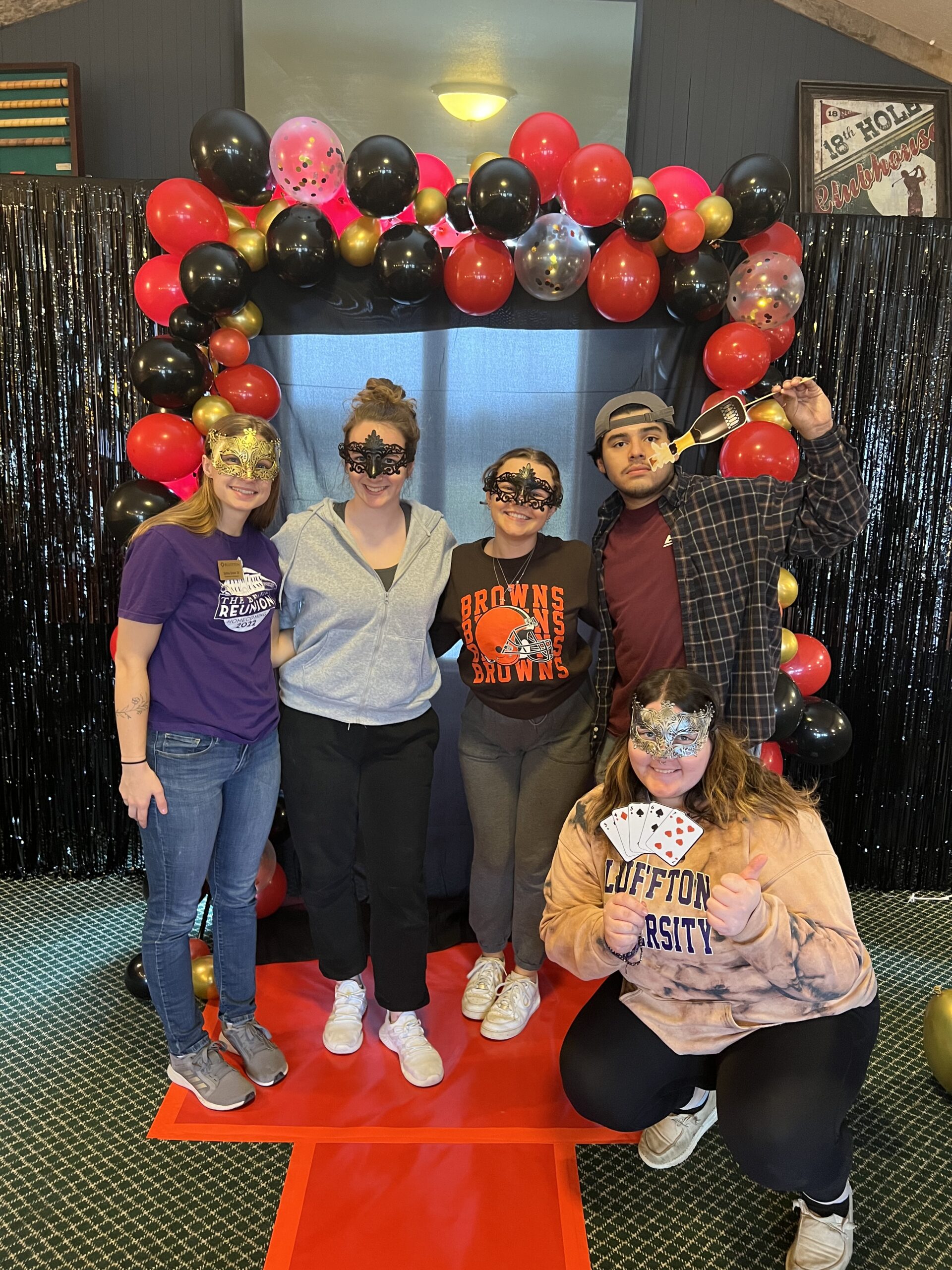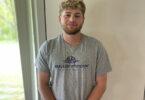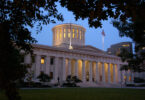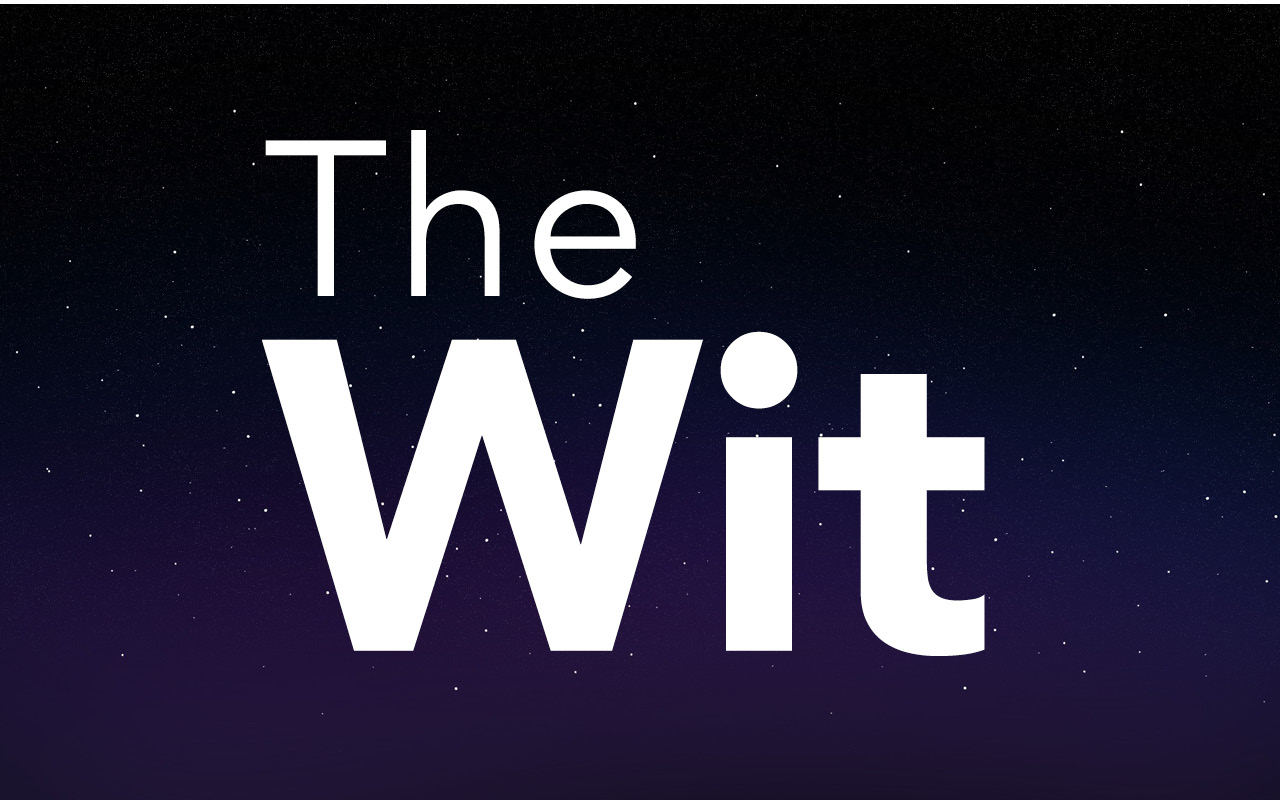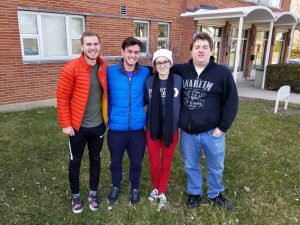
Blake Hershberger, Wyatt Baer, Erika Byler and Jared Hurst. Courtesy photo
A group of four Bluffton University seniors traveled with history professor Dr. Perry Bush to Eastern Mennonite University, in Harrisonburg, Va., on March 24 for the “Centennial Histories Symposium.”
The students included Wyatt Baer, Erika Byler, Blake Hershberger and Jared Hurst.
The conference focused on the investigating the previous century of Mennonite higher education in order to guide conversations about the future of these institutions.
The five colleges associated with Mennonite Church USA have each had their centennials in the last 30 years: Bethel College (1887) in North Newton, Kan., Goshen (Ind.) College (1893), Bluffton University (1899), Hesston (Kan.) College (1908) and Eastern Mennonite University (1917).
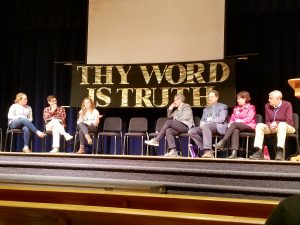 Student representatives from these colleges played a significant role at the conference because of the acknowledgement that students will ultimately determine the future of these institutions. Students were able to draw on their undergraduate experiences as well as the histories of the Mennonite colleges to envision what the future may hold for these institutions.
Student representatives from these colleges played a significant role at the conference because of the acknowledgement that students will ultimately determine the future of these institutions. Students were able to draw on their undergraduate experiences as well as the histories of the Mennonite colleges to envision what the future may hold for these institutions.
“It was an exciting opportunity to be able to talk about the future of higher Mennonite education with historians, students, and presidents from all five Mennonite colleges across the country,” said Baer. “I am excited for what the future has in store for Mennonite higher education.”
The conference featured authors of each school’s centennial histories who presented over their respective institutions’ histories. Sessions included the purposes and distinctions, challenges and adversity, and the present and future of each Mennonite, higher education institution.

Dr. Perry Bush. Photo by Blake Hershberger.
Bush, who is the author of Dancing with the Kobzar: Bluffton College and Mennonite Higher Education 1899-1999, presented for Bluffton University. Bluffton President Jim Harder, along with presidents from the other colleges, also offered their perspectives at the conference.
Conversations about the present and future of Mennonite higher education focused primarily on financial problems and shifting student demographics.
The latter topic is tied up with identity questions of what it means to be a Mennonite affiliated school as the percentage of Mennonite students are dropping. From 2015 to 2016 there was a sharp 12.5 percent drop in Mennonite undergraduate students at Mennonite Church USA affiliated colleges according to Mennonite Education Agency’s Enrollment Report.
Bluffton University, which has had a low percentage of Mennonite students through much of its existence, approaches this question in a unique way.
In Dancing with the Kobzar, Bush concludes, “Bluffton’s openness to non-Mennonites was written into the college charter in its first few decades and assumed a greater importance after World War II. Even as its ethnic base eroded, the college’s fundamental sense of mission flourished because it remained rooted in Anabaptist conceptions rather than ethnic Mennonite ones–conceptions outsiders were continually invited to consider and perhaps, accept.”
While these observations were written over a decade ago, they still ring true today. As student demographics continue to shift, these comments are not only relevant to Bluffton University’s future, but perhaps, to all Mennonite higher education institutions.

